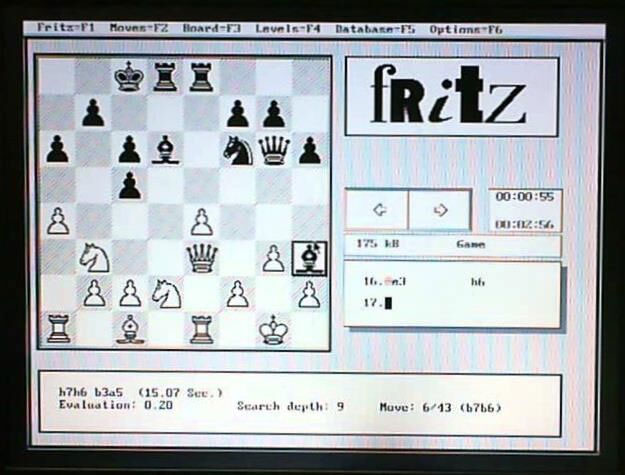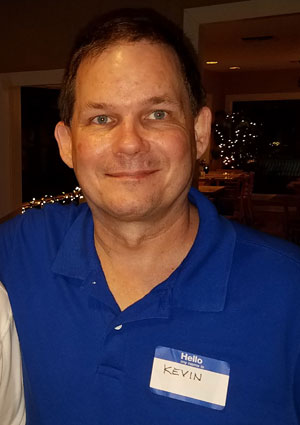
Life is a long and winding road, and most of us follow many paths to get to where we are today. That said, I do admire a couple of guys from back in my school days, who knew exactly what they wanted from childhood, and pursued that through retirement. One loved the fire department, and volunteered as a kid, but ultimately became a fire chief.
When I was growing up in New Hampshire, I loved tennis; and I was very good at it. I was always a very focused person, which later would be transferred to my chess; and as such, I played tennis pretty much from sun up until sundown every day in the summer on the court that was about 100 feet from my house. If I did not have an opponent, I was hitting balls off the backboard. I had dreams of becoming a professional, but frankly, it was my naiveté getting the best of me. I would later learn that you could be very good in New Hampshire, but still no match for places like Florida and California where they had access to the best competition twelve months a year.
Then came the summer of 1979, and I met my friend Tyson E’Porter Hatcher, who was a college student at Howard University, and model. He was a tall and very handsome young black man, who exuded a level of class that I still have never encountered again in my entire life. He was an awesome guy.
Tyson was visiting his mother, who lived across the street, and one day, I saw him playing on the court. I could immediately tell that he was an outstanding player, so out the door I went. We ended up playing all summer, including in Louisville, Kentucky, where his father was an Alderman, and later a Kentucky State Representative.
All summer, Tyson SMOKED me, and taught me just how naïve my goals were, but I came back and creamed everyone I played up here, including some of the very best in my state. If Tyson could do this to me, it showed me just how must faster and stronger the pros at the time were…and they have only gotten stronger. Sadly, Tyson died of a brain aneurysm at age 27.
Sometime around there, I tore my rotator cuff, which was really major surgery back then. In addition, I was starting to need glasses. The summer ended, and I went back to high school for my senior year.
Sometime during the year, I saw two math teachers, Jim Roy and Lee Dailing, playing chess in the library at lunch with several students. I am still friends with Lee today. I started to go to the library every chance I could, and Lee also clued me into the existence of the Manchester, NH Chess Club on Monday nights. I started to go regularly, and met then-USCF-Expert (later Master), Hal Terrie (Henry L. Terrie III), who was rated about 2050. I wanted to beat him so badly.
I started to study, and studying chess occupied my every free moment. It was not long before my young, fast, mind could steal a game here or there from Hal, but I wanted more.
I graduated high school, and frankly, coming from an alcoholic family, no one ever pushed me toward college, so I was a bit directionless…and then an Air Force recruiter called, and I signed on the dotted line. Typical slimy recruiter story: “You like electronics?” “Yes, sir,” and my guaranteed job was going to be an “Armament Systems Specialist”. I would later find out that that meant “bomb loader”.
Luckily, I avoided that fate since my ASVAB (Armed Services Vocational Aptitude Battery) entrance scores were in the top 10% of all recruits. While in Basic Training, they came to me and said, “we will give you $2500 if you become a linguist”. Being a kid, $2500 was a lot, even after taxes, so I said “sure”. I became a Russian “Cryptologic Linguist”, the same field as IM Emory Tate, who was two classes ahead of me. We would face each other three times in Air Force tournaments: He would beat me when I was 1700, and we drew two once I was a Master. Sadly, Emory died during a tournament at the age of 56 in 2015. The Russian would turn out to be handy in the realm of chess.
I continued to study chess, and improve, and I was a Master by 1986, about six years after my first tournament. After the service, chess became my life again, but I still needed money, so I started a carpet-cleaning business mostly since my brother was doing so well in his landscaping business. I am proud to say that within only three months, I was quite profitable, and had paid off the loan I used to start the business.
So where does ChessBase come into all this, and how did it lead me to a good life and career? Well, I already had decent money coming in, without which, I never would have been able to pay for the following purchases. In 1991, I saw ChessBase and NIC-base advertised, and I bought ChessBase and KnightStalker (really Fritz 1.0 in the rest of the world, before a name change here in the U.S. for version 2.0, I believe), and yes, NICBase, which I ultimately never really used. Well, we all know which software won that war.

Of course, I also needed a PC to run it on, so I bought a Gateway 486/50 with 8 MB RAM and a 300 MB hard drive running DOS 5 and Windows 3.0! Sounds primitive, but that computer was state-of the-art, and cost me $3300 at the time. It also set me on a new course in life.
I continued to study chess on my new computer with ChessBase. Sometimes, I would quickly look at even 1000 games in a day in a specific opening, choosing the ones to throw into a new opening database for further study. Back then, even KnightStalker 1.0 kicked my butt.
This love of ChessBase, and playing with the computer, and interest in DOS, led me to a greater love of computers. I was one of those people, who actually read the manuals cover to cover, and learned a lot. I then tried to get a job, and the guy asked a question: “What IRQ does COM3 use?” I fumbled, and that was the end of that for the time being.
Serendipity stepped in, and in the early 1990s, I bought a used car from a guy who worked in networking, and he told me about the Novell CNE program (Certified Netware Engineer, later Certified Novell Engineer). At the time, there was not a single course, or degree, in the country covering computer networking. There were programming and a computer-science degrees, sure, but not networking. Novell was just becoming a big deal, and I got in very early.
The CNE Study Guide had just been published, and I bought it, and the components to build three computers along with the software. Building a computer is actually a lot easier than it sounds, so please do not be impressed by this. I started reading 1600 pages of technical material covering seven exams, which I took over the next few months. I ultimately took about 70 exams resulting in 23 various certifications, but I was clearly serious about this computer stuff.
Becoming a CNE led to my first job in the computer business, and second job as a Senior Network Engineer. After about three years, I chose to go out on my own again, and have been working for myself for 25 years in this field. Through the years as a consultant, I have been in charge of 52,000 email users for a Fortune 50 company, and in charge of another network with 1200 users, 65 servers, and eight locations.
Today, I mostly help smaller companies with all their IT needs, in particular, I try to protect them from the scourge that that is ransomware. No one can guarantee that you will never be infected, but so far, I have managed to keep every client safe. Before I conclude, in case there is anyone, who might be interested in my services, even though I have been a Chess Master for more than 35 years, and a three-time NH State Chess Champion, and I am a lot better at computers than I ever was at chess.
So, a hurt shoulder led to chess, led to buying a computer for ChessBase, led to a great career in the IT business. Being self-employed has given me freedom and frankly, a decent amount of money. It has allowed me to raise my daughter in a beautiful home, and give her the things she has needed to thrive.

Kevin's meticulously maintained chess library, which he one day will leave to his daughter
Thank you to Lee Dailing, who really influenced my life more than any other person, and to ChessBase, which led me to my love of computers.
Analytical skills
By Karsten Müller
For a number of months now ChessBass Endgame expert GM Dr. Karsten Müller has been solving historical chess riddles. One of his main helpers is Kevin Cotreau. Here an example:
Five months after the Palma de Mallorca Interzonal (1970) qualifier, the quarterfinals of the Candidates Matches was held. American GM Bobby Fischer faced the experienced Soviet star Mark Taimanov in a ten-game match, which was held in Vancouver, Canada.
We described the background of the match, which Fischer won 6:0, in this article, and asked our readers to help solve one of the great mysteries of chess history: in the key game four was Taimanov's move 42...Kd8 a terrible mistake? In the adjournment had the mighty Soviet analysts missed a way to save the game?
Now, with the help of our readers, we can confidently say: the old riddle is solved: Fischer was always winning!
The winning proof provided by Kevin Cotreau (ChessBase handle PhishMaster) is clear and elegant, and much easier than Charles Sullivan's old proof from Endgame Corner 106. Without his analysis I was not able to find the clear logical proof.
See also: Benko-Kortschnoi: Riddle solved

Summary Bio
Kevin bought his first computer, a 486/50, back in 1991 – specifically to run ChessBase. "I really enjoyed learning about computers", he says, "I guess you could say that ChessBase is the reason I have a career now, as it steered me into my chosen field: I have been primarily self-employed as a computer network consultant since (I am actually a lot better at computers than I ever was at chess)."
Well, what happened to his chess? "One year after my last state championship in 2003, my only child, a fantastic daughter, came along, and I focused on being a great dad. Only last year did I start playing tournaments again. It was a rough start (rust and age), but I have done better in each of successive tournament."



























